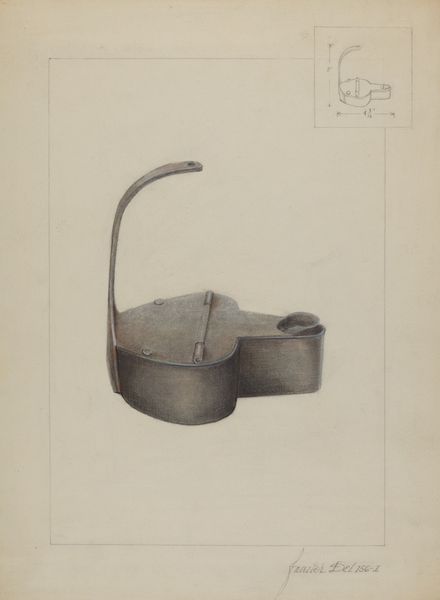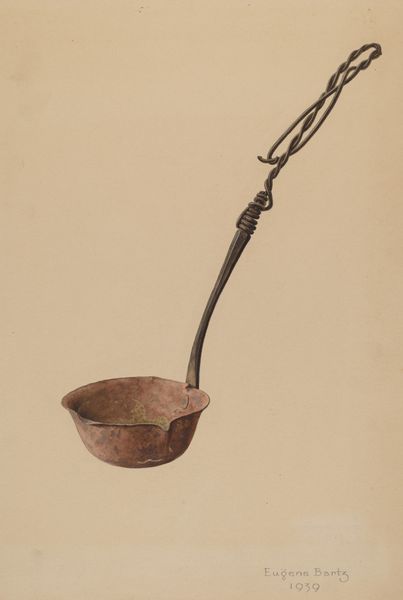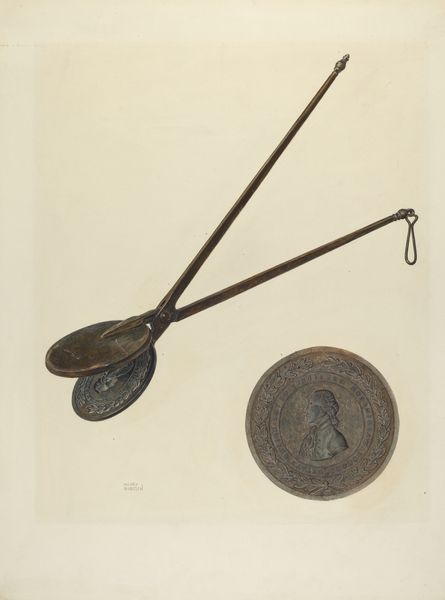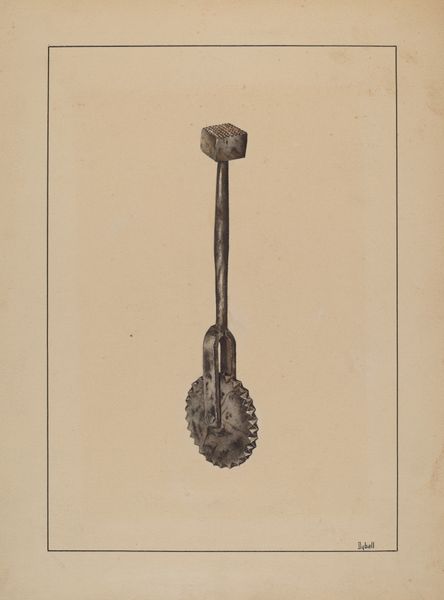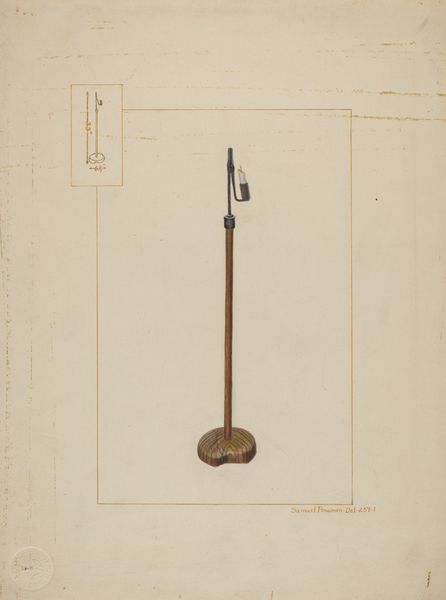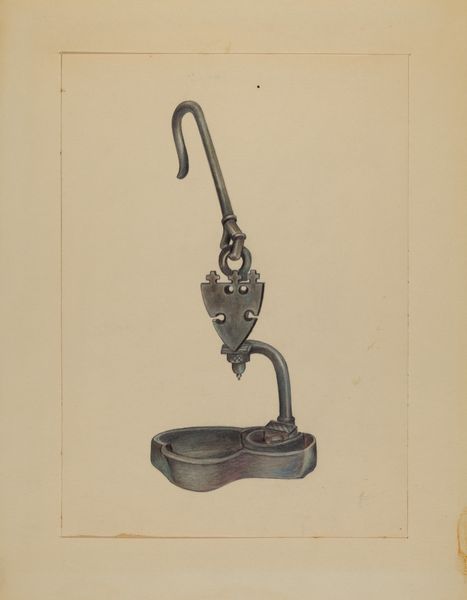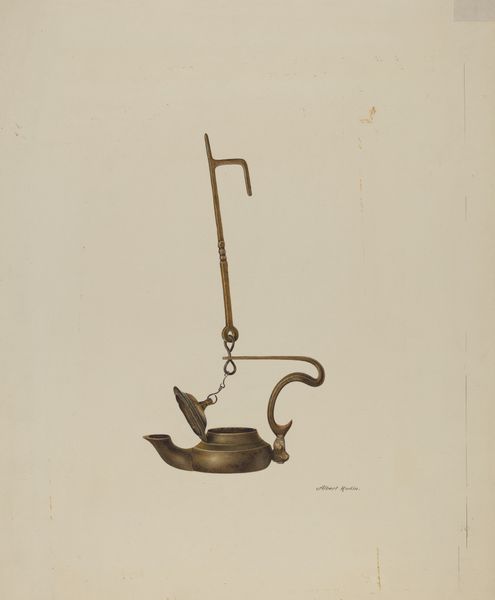
drawing, pencil, graphite
#
pencil drawn
#
drawing
#
pencil
#
graphite
#
realism
Dimensions: overall: 37.9 x 27.4 cm (14 15/16 x 10 13/16 in.) Original IAD Object: 10" high; 3 7/8" long; 1" high
Copyright: National Gallery of Art: CC0 1.0
Editor: We’re looking at Howard Lumbard’s "Whale Oil Lamp" from around 1938, a pencil drawing of what looks like a humble, antique light source. There's something quite stark and beautiful in its simplicity. What strikes you most when you look at it? Curator: Ah, yes, starkness. That's a great word for it! I am immediately transported. I think of long winter nights in a whaling village, perhaps. Can you imagine relying on such a small flame to push back the darkness? Each stroke of Lumbard's pencil feels deliberate, almost reverent. Notice how the graphite captures the metal’s subtle gleam – it almost feels like the lamp could swing with a touch. What do you make of his commitment to realism here? Editor: It does feel very precise. It seems to be saying that there's a profound kind of beauty even in everyday, utilitarian objects, if you really *look* at them. What would someone at the time, in the late 30s, have thought about this kind of subject matter? Curator: Well, think about the context: the late 1930s were steeped in the Great Depression. There's something comforting, perhaps, in the return to a simpler time, a slower way of life. And let’s not forget, the whale oil lamp represents a resourcefulness, a make-do-and-mend ethos. Was Lumbard perhaps commenting on contemporary values by showcasing this antiquated design? Editor: That’s fascinating! It could be interpreted as an encouragement in hard times. I definitely appreciate it in a new light. Curator: Absolutely! Art, even a simple pencil drawing, has the power to be so much more than just what’s on the surface. It's a mirror to a moment in time. It makes one appreciate these echoes from the past all the more.
Comments
No comments
Be the first to comment and join the conversation on the ultimate creative platform.





